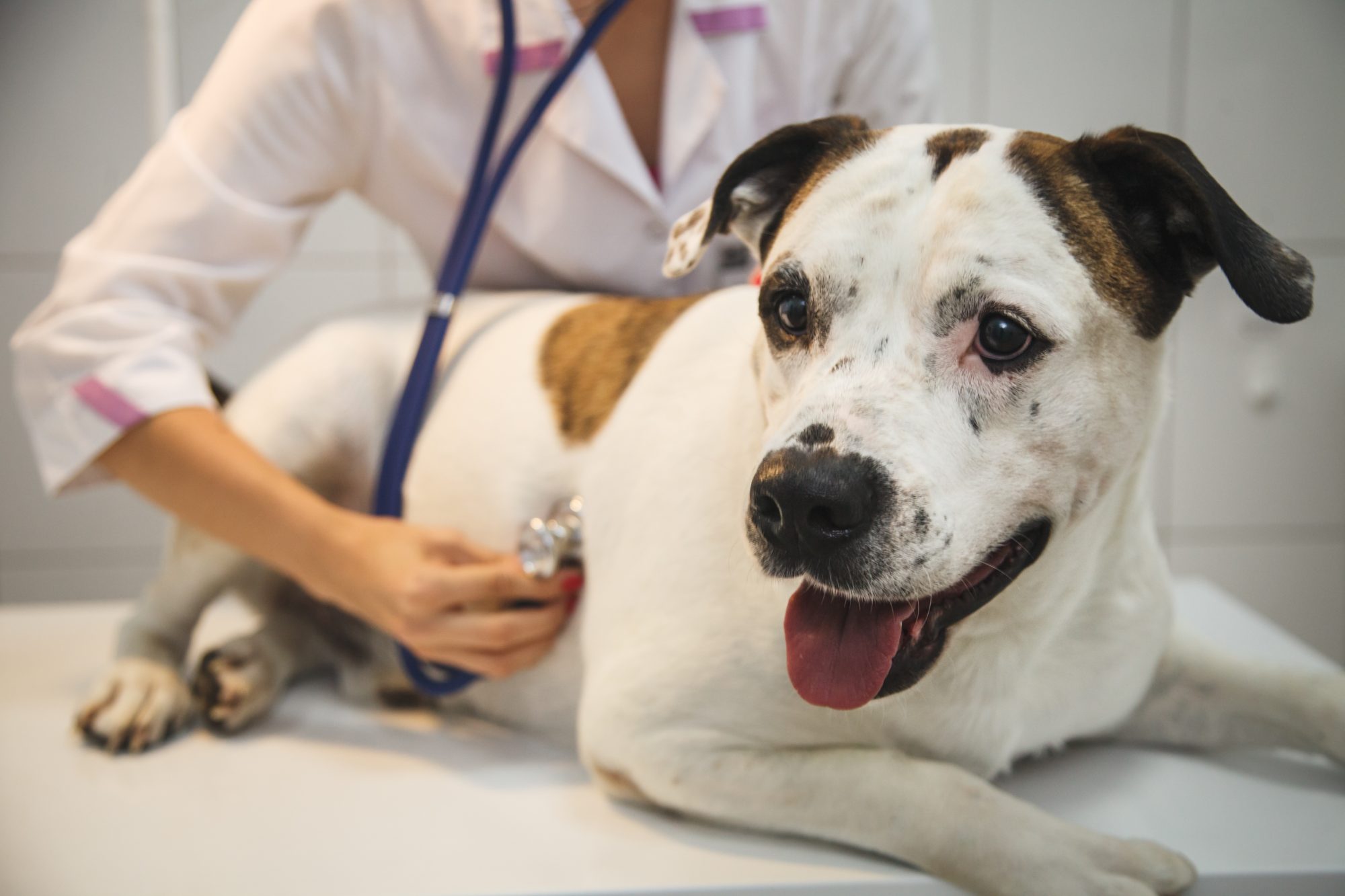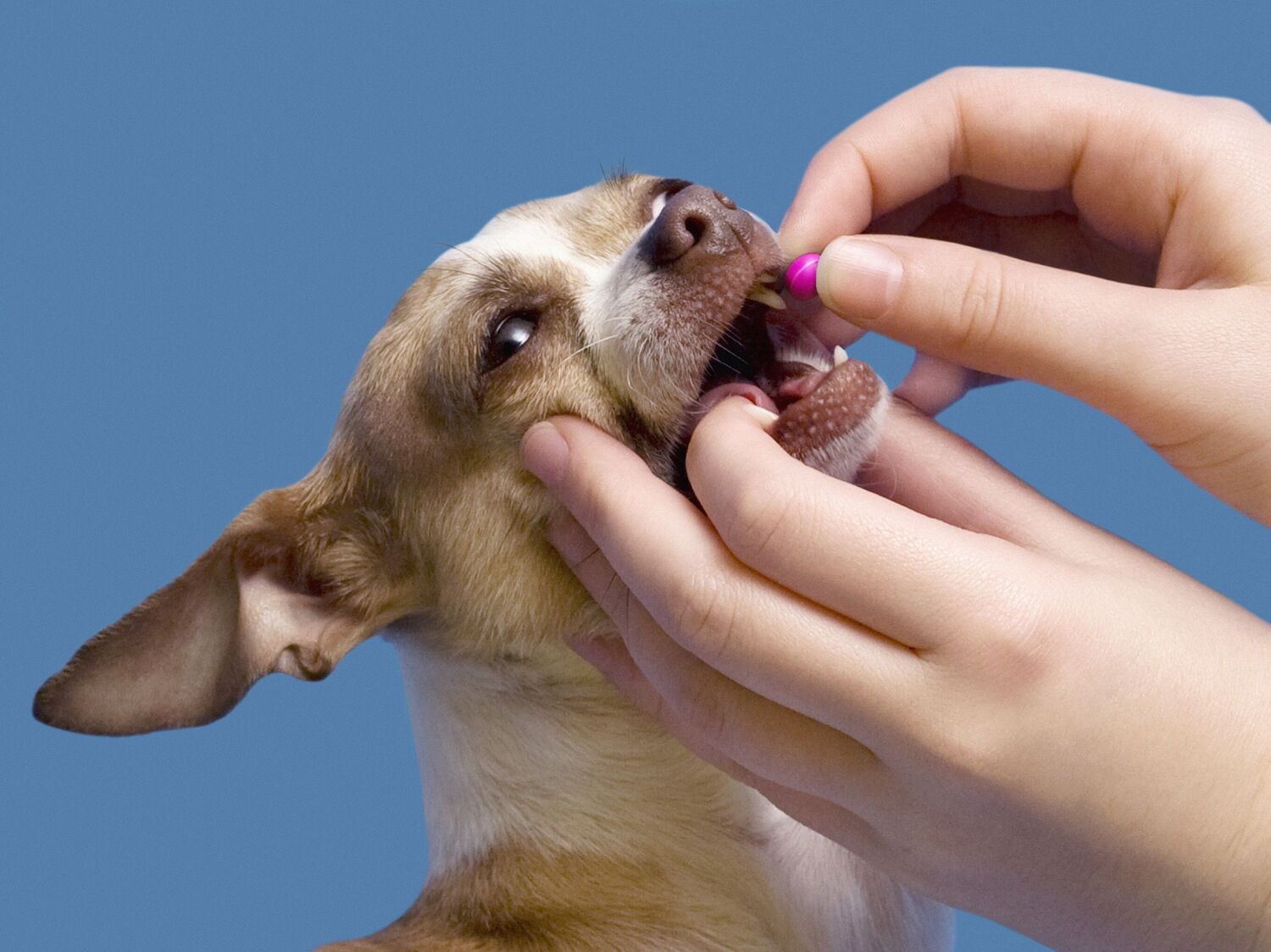Home>Health & Wellness>Common Health Issues>Heart Health>How Does A Heartworm Affect Dogs


Heart Health
How Does A Heartworm Affect Dogs
Published: February 7, 2024
Learn about the impact of heartworm on dogs and how it affects their heart health. Discover prevention and treatment options to keep your pet safe.
(Many of the links in this article redirect to a specific reviewed product. Your purchase of these products through affiliate links helps to generate commission for Pawsomeoldies.com, at no extra cost. Learn more)
Table of Contents
Introduction
Heartworm disease is a serious and potentially fatal condition that can affect our beloved canine companions. As responsible pet owners, it's crucial to understand the impact of heartworms on dogs and take proactive measures to protect them from this insidious threat.
Heartworm disease is caused by a parasitic worm known as Dirofilaria immitis, which is transmitted through the bite of an infected mosquito. Once inside a dog's body, these worms can grow and multiply, leading to severe damage to the heart, lungs, and blood vessels. The presence of heartworms can compromise a dog's overall health and well-being, making it essential for pet owners to be vigilant and informed about this potentially life-threatening condition.
In this article, we will delve into the intricacies of heartworm disease in dogs, exploring its causes, symptoms, diagnosis, treatment, and prevention. By gaining a comprehensive understanding of heartworms and their impact on our furry friends, we can take proactive steps to safeguard their health and ensure they lead happy, active lives free from the burden of this preventable disease.
What is a heartworm?
Heartworms, scientifically known as Dirofilaria immitis, are parasitic roundworms that can cause severe and potentially fatal health issues in dogs. These worms have a complex life cycle that begins when an infected mosquito bites a dog, transmitting microscopic heartworm larvae into the animal's bloodstream. Over the course of several months, these larvae mature into large worms that can inhabit the heart, lungs, and blood vessels of the infected dog.
As heartworms grow and multiply within a dog's body, they can cause extensive damage to vital organs and disrupt normal blood flow. The presence of these parasites can lead to a range of health complications, including pulmonary hypertension, heart failure, and severe lung disease. Left untreated, heartworm disease can significantly compromise a dog's quality of life and, in severe cases, result in death.
It's important to note that heartworms primarily affect dogs, but they can also infect other animals, such as cats, ferrets, and even wild mammals like coyotes and foxes. However, the impact of heartworm disease is particularly devastating in dogs, making it essential for pet owners to prioritize preventive measures to safeguard their canine companions from this potentially life-threatening condition.
Understanding the nature of heartworms and their detrimental effects on dogs is crucial for implementing effective prevention and treatment strategies. By gaining insight into the biology and behavior of these parasitic worms, pet owners can take proactive steps to protect their furry friends and ensure they lead healthy, fulfilling lives free from the burden of heartworm disease.
How do dogs get heartworms?
Dogs acquire heartworms through the bite of an infected mosquito carrying microscopic heartworm larvae. When a mosquito feeds on an infected animal, it ingests tiny immature heartworms circulating in the bloodstream. Over the next 10 to 14 days, these larvae develop within the mosquito into an infective stage. Subsequently, when the infected mosquito bites a susceptible dog, it deposits these infective larvae onto the dog's skin. The larvae then enter the dog's body through the mosquito's bite wound and begin their migration through the dog's tissues.
Over the next several months, the larvae travel through the dog's body, eventually reaching the heart and pulmonary arteries. Here, they continue to mature into adult heartworms, capable of reproducing and perpetuating the life cycle. Once mature, these worms can grow up to 12 inches in length and can live for several years within a dog's body, causing significant damage to the cardiovascular and respiratory systems.
It's important to note that heartworm disease is not directly contagious from one dog to another. Instead, it relies on the presence of infected mosquitoes to transmit the disease. This means that all dogs, regardless of breed, age, or lifestyle, are susceptible to heartworm infection if they are bitten by an infected mosquito.
The prevalence of heartworm disease varies geographically, with higher incidences reported in regions where mosquitoes thrive. However, no area is entirely free from the risk of heartworm transmission, making preventive measures essential for all dogs, regardless of their location.
Understanding the mechanism of heartworm transmission underscores the significance of preventive strategies, such as regular administration of heartworm preventives and environmental mosquito control. By taking proactive steps to protect dogs from mosquito bites and potential heartworm infection, pet owners can significantly reduce the risk of their beloved canine companions developing this debilitating and potentially fatal disease.
Symptoms of heartworm in dogs
Heartworm disease can manifest in various symptoms, and the severity of these symptoms often correlates with the extent of the infestation. In the early stages, dogs infected with heartworms may exhibit subtle signs or even remain asymptomatic. However, as the disease progresses and the worm burden increases, the symptoms become more pronounced and can significantly impact the dog's health and well-being.
-
Mild Symptoms: In the initial stages of heartworm infestation, dogs may display mild and easily overlooked symptoms, such as occasional coughing, reluctance to exercise, and decreased stamina during physical activity. These early signs can often be mistaken for normal aging or minor respiratory issues, leading to delayed diagnosis and treatment.
-
Moderate Symptoms: As the heartworm infection advances, dogs may experience more noticeable symptoms, including persistent coughing, labored breathing, and reduced appetite. Additionally, dogs may exhibit lethargy, weakness, and intolerance to physical exertion, indicating the strain on their cardiovascular and respiratory systems.
-
Severe Symptoms: In advanced cases of heartworm disease, dogs can suffer from severe and potentially life-threatening symptoms. These may include pronounced weight loss, distended abdomen due to fluid accumulation, and a bluish tinge to the gums, indicating poor oxygenation. Dogs may also exhibit fainting episodes, chronic fatigue, and an overall decline in their quality of life.
-
Cardiovascular Complications: The presence of heartworms can lead to serious cardiovascular complications, such as heart failure, abnormal heart rhythms, and compromised blood flow. These complications can manifest as symptoms like a persistent cough, difficulty breathing, and an enlarged liver, reflecting the strain on the dog's heart and circulatory system.
It's important to note that the progression and severity of symptoms can vary based on factors such as the number of worms present, the dog's overall health, and the duration of the infection. Additionally, some dogs may exhibit atypical or subtle symptoms, making it challenging for pet owners to recognize the presence of heartworm disease without a thorough veterinary evaluation.
Understanding the spectrum of symptoms associated with heartworm disease is crucial for early detection and intervention. Regular veterinary check-ups, including heartworm testing as part of preventive care, can aid in identifying the disease in its early stages, allowing for prompt treatment and improved outcomes for affected dogs.
By recognizing the potential symptoms of heartworm disease and seeking timely veterinary care, pet owners can take proactive steps to safeguard their dogs' health and well-being, mitigating the impact of this debilitating condition on their beloved canine companions.
Diagnosis and treatment of heartworm in dogs
Diagnosing heartworm disease in dogs typically involves a combination of clinical evaluation, laboratory testing, and advanced imaging techniques. The goal is to accurately assess the extent of the infestation and determine the most appropriate course of treatment to mitigate the impact on the dog's health.
Diagnosis
-
Physical Examination: A thorough physical examination by a veterinarian can reveal potential signs of heartworm disease, such as abnormal lung or heart sounds, distended abdomen, and exercise intolerance.
-
Blood Tests: Blood tests, including antigen and microfilaria tests, are commonly used to detect the presence of heartworm proteins and circulating microfilariae in the dog's bloodstream. These tests provide valuable insights into the severity of the infestation and help guide treatment decisions.
-
Imaging Studies: Advanced imaging techniques, such as chest X-rays and echocardiography, are employed to visualize the heart and lungs, allowing for the assessment of structural changes, fluid accumulation, and the presence of adult heartworms.
Treatment
-
Stabilization: Before initiating treatment for heartworm disease, it is essential to stabilize the dog's condition, particularly if severe symptoms are present. This may involve addressing respiratory distress, providing supportive care, and managing concurrent health issues.
-
Adulticide Therapy: The primary treatment for heartworm disease involves the administration of adulticide medications designed to eliminate adult heartworms from the dog's body. This process requires careful monitoring and may involve multiple treatment sessions to ensure the effective removal of the parasites.
-
Post-Treatment Care: Following adulticide therapy, dogs require a period of restricted activity to minimize the risk of complications associated with the breakdown of the worms and the body's response to their elimination. Close veterinary supervision is crucial during this recovery phase.
-
Preventive Measures: Concurrently, preventive measures, such as the administration of monthly heartworm preventives, are initiated to protect the dog from potential reinfestation and to prevent the development of new heartworm infections.
Follow-Up
After the completion of treatment, dogs undergo a series of follow-up evaluations to assess their response to therapy, monitor for potential complications, and confirm the absence of remaining heartworms. This comprehensive approach to diagnosis and treatment aims to improve the dog's overall prognosis and minimize the long-term impact of heartworm disease on their health.
By promptly diagnosing heartworm disease and implementing appropriate treatment measures, veterinarians and pet owners can work together to mitigate the impact of this potentially life-threatening condition and ensure affected dogs have the best possible chance of recovery and long-term well-being.
Prevention of heartworm in dogs
Preventing heartworm disease in dogs is paramount in safeguarding their health and well-being. Proactive measures aimed at minimizing the risk of heartworm infection are essential for all dogs, regardless of their age, breed, or lifestyle. By prioritizing preventive strategies, pet owners can significantly reduce the likelihood of their beloved canine companions falling victim to this debilitating and potentially fatal condition.
Monthly Heartworm Preventives
One of the cornerstone approaches to heartworm prevention involves the regular administration of monthly heartworm preventives. These medications, available in various formulations such as chewable tablets, topical solutions, and injectable products, are designed to disrupt the development of heartworm larvae transmitted by infected mosquitoes. By consistently administering these preventives, pet owners can effectively protect their dogs from acquiring heartworms, providing a crucial line of defense against this parasitic threat.
Veterinary Guidance and Testing
Regular veterinary consultations play a pivotal role in heartworm prevention. Veterinarians can provide tailored recommendations for selecting the most suitable heartworm preventive products based on the dog's individual needs and health status. Additionally, annual heartworm testing is recommended to ensure early detection of any potential infections and to confirm the effectiveness of the preventive measures. This proactive approach enables pet owners to stay ahead of the disease and take prompt action if heartworms are detected.
Environmental Mosquito Control
Minimizing exposure to mosquitoes is an integral part of heartworm prevention. Implementing environmental mosquito control measures, such as eliminating standing water, using mosquito repellents, and employing mosquito-proofing strategies for outdoor living spaces, can help reduce the risk of mosquito bites and subsequent heartworm transmission. By creating a less hospitable environment for mosquitoes, pet owners can further fortify their dogs' defenses against this parasitic menace.
Education and Awareness
Educating pet owners about the prevalence and impact of heartworm disease is crucial for fostering a proactive and informed approach to prevention. By raising awareness about the risks associated with heartworm infection and the importance of preventive measures, veterinary professionals can empower pet owners to prioritize their dogs' health and take proactive steps to mitigate the threat of heartworm disease. This collaborative effort between veterinarians and pet owners is instrumental in creating a united front against heartworms.
Read more: How To Prevent Heartworm In Dogs
Holistic Approach
A holistic approach to heartworm prevention encompasses a combination of preventive measures, regular veterinary care, and environmental management. By integrating these strategies into a comprehensive preventive plan, pet owners can create a protective shield around their dogs, reducing the likelihood of heartworm transmission and ensuring their furry companions lead healthy, active lives free from the burden of this preventable disease.
By embracing a multi-faceted approach to heartworm prevention and staying committed to proactive measures, pet owners can significantly reduce the risk of their dogs contracting heartworm disease. This proactive stance not only protects individual dogs but also contributes to the broader goal of minimizing the prevalence of heartworms in canine populations, ultimately creating safer and healthier environments for our beloved four-legged friends.
Conclusion
In conclusion, heartworm disease poses a significant threat to the health and well-being of dogs, necessitating a proactive and informed approach to prevention, diagnosis, and treatment. Understanding the insidious nature of heartworms and their potential impact on canine companions is paramount for pet owners and veterinary professionals alike. By recognizing the modes of transmission, spectrum of symptoms, and diagnostic and treatment modalities associated with heartworm disease, we can collectively work towards mitigating its impact and safeguarding the lives of our beloved dogs.
Prevention stands as the cornerstone in the battle against heartworm disease. Through the regular administration of monthly heartworm preventives, guided by veterinary expertise and complemented by environmental mosquito control measures, pet owners can create a protective shield around their dogs, reducing the risk of heartworm transmission. Furthermore, raising awareness about the prevalence and consequences of heartworm disease empowers pet owners to prioritize preventive measures and seek timely veterinary care, fostering a proactive and united front against this parasitic threat.
Early diagnosis and intervention are pivotal in improving the prognosis of dogs affected by heartworm disease. By recognizing the potential symptoms and seeking regular veterinary check-ups, pet owners can aid in the early detection of heartworms, allowing for prompt treatment and improved outcomes for their furry companions. The comprehensive approach to diagnosis, including clinical evaluation, laboratory testing, and advanced imaging techniques, enables veterinarians to tailor treatment plans and provide the best possible care for affected dogs.
The commitment to preventive strategies, regular veterinary care, and environmental management forms the bedrock of a holistic approach to heartworm disease. By embracing a multi-faceted preventive plan and staying dedicated to proactive measures, pet owners can significantly reduce the risk of their dogs contracting heartworm disease, contributing to the broader goal of minimizing the prevalence of heartworms in canine populations.
In essence, the battle against heartworm disease requires a collaborative effort, uniting pet owners, veterinary professionals, and the broader community in a shared commitment to protecting the health and well-being of dogs. By staying informed, proactive, and compassionate, we can create safer and healthier environments for our canine companions, ensuring they lead vibrant, heartworm-free lives filled with joy, vitality, and companionship.












